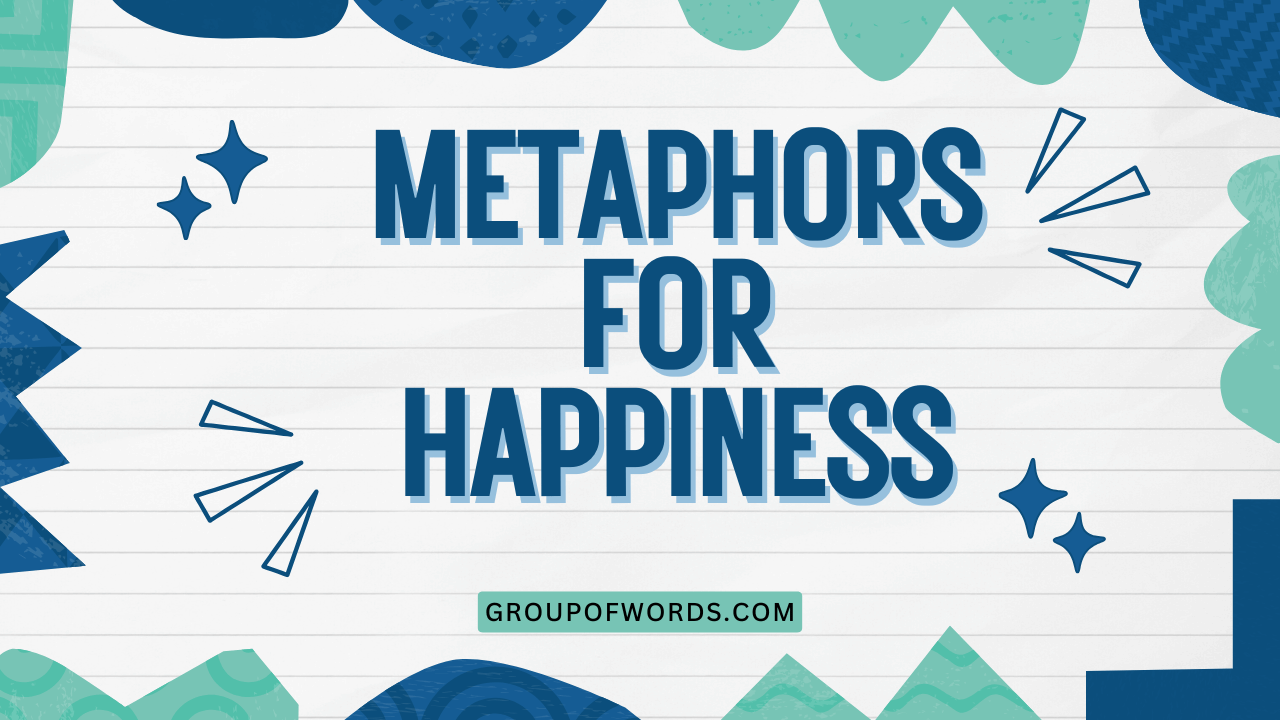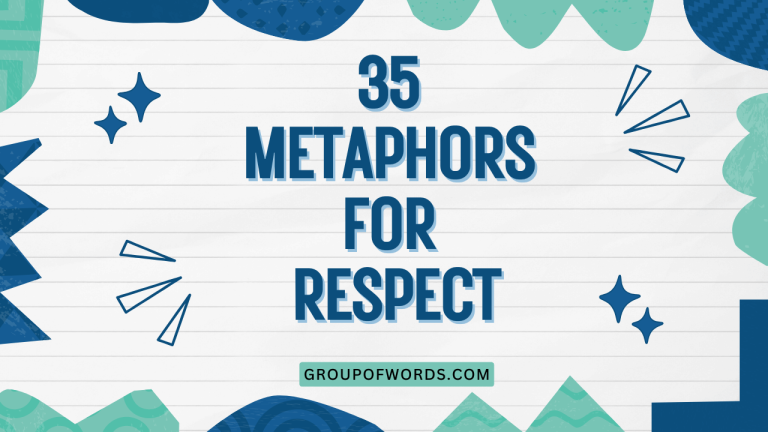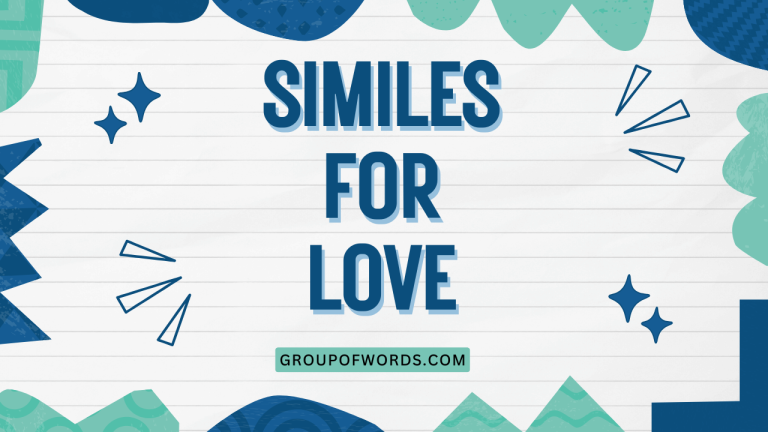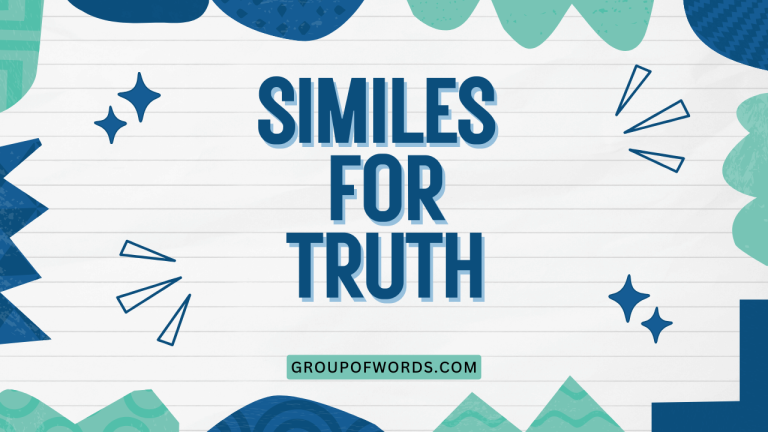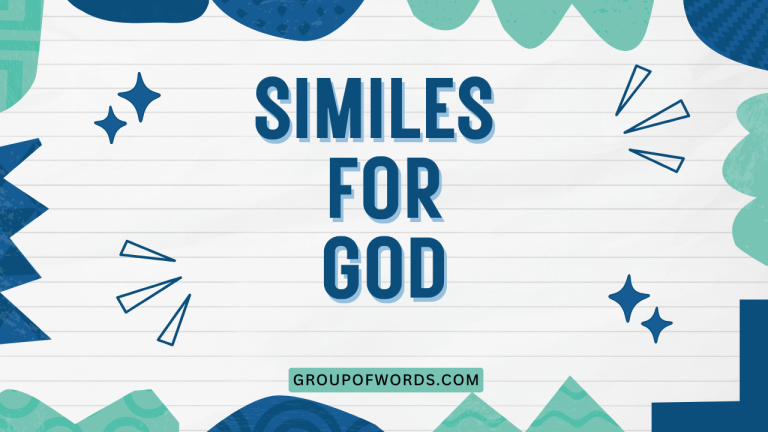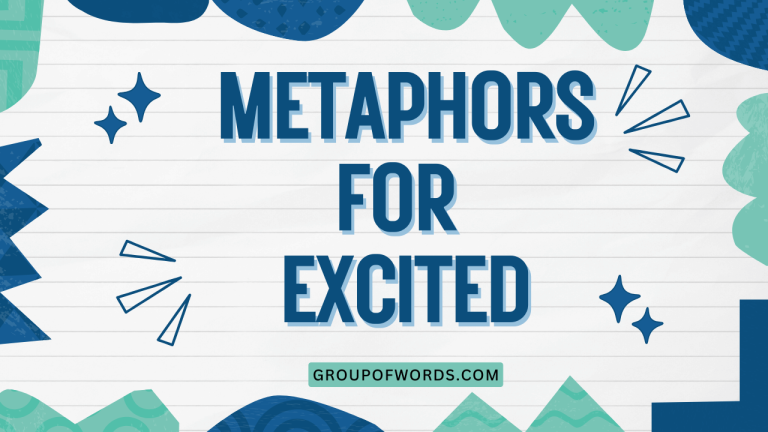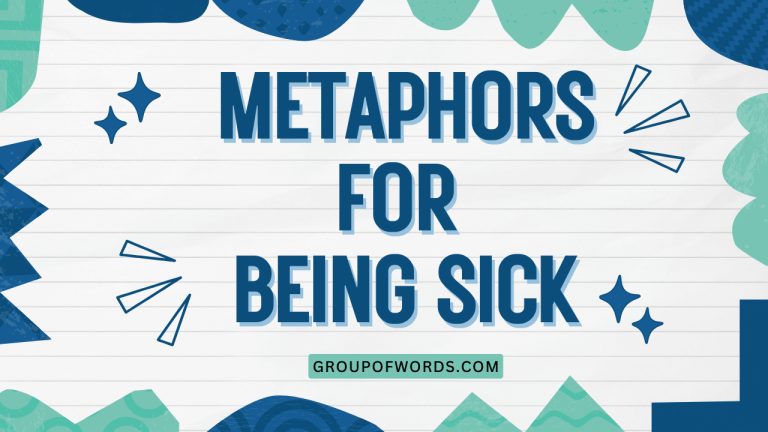Metaphors for Happiness: A Comprehensive Guide
Understanding how we talk about happiness is crucial for both effective communication and a deeper appreciation of the English language. Metaphors shape our understanding of abstract concepts like happiness, making them more tangible and relatable.
This article delves into the world of metaphors for happiness, exploring their types, usage, and common pitfalls. Whether you’re an English language learner, a writer seeking vivid expression, or simply curious about the nuances of language, this guide will provide valuable insights and practical tools.
Table of Contents
- Introduction
- Definition: Metaphors for Happiness
- Structural Breakdown
- Types and Categories of Happiness Metaphors
- Examples of Metaphors for Happiness
- Usage Rules for Happiness Metaphors
- Common Mistakes with Happiness Metaphors
- Practice Exercises
- Advanced Topics
- Frequently Asked Questions
- Conclusion
Definition: Metaphors for Happiness
A metaphor is a figure of speech that directly compares two unrelated things, asserting that one thing is another. It’s not meant to be taken literally but rather to create a deeper understanding or connection. In the context of happiness, metaphors help us express this abstract emotion in more concrete and relatable terms. They allow us to borrow qualities from tangible objects or experiences to illuminate the often-elusive feeling of happiness. For example, saying “Happiness is a warm blanket” doesn’t mean happiness literally is a blanket, but it evokes the feeling of comfort and security associated with a warm blanket, thus making the abstract concept of happiness more understandable. Metaphors provide a powerful tool for writers and speakers to add depth and emotional resonance to their language.
Metaphors for happiness function by transferring attributes from a source domain (e.g., light, warmth, journeys) to the target domain of happiness. This transfer allows us to conceptualize and communicate happiness in a more vivid and engaging way.
The effectiveness of a metaphor depends on the audience’s understanding and association with the source domain. A well-chosen metaphor can resonate deeply, creating a powerful emotional connection.
Happiness metaphors are pervasive in literature, poetry, everyday conversation, and even advertising, highlighting their importance in how we perceive and express this fundamental human emotion.
Structural Breakdown
The structure of a metaphor typically involves two key elements: the tenor and the vehicle. The tenor is the subject to which metaphorical attributes are ascribed (in this case, happiness), and the vehicle is the object or concept from which those attributes are borrowed. The relationship between the tenor and the vehicle creates the metaphorical meaning. For example, in the metaphor “Happiness is a sunny day,” happiness is the tenor, and a sunny day is the vehicle. The qualities of brightness, warmth, and joy associated with a sunny day are transferred to happiness, enriching our understanding of the emotion.
Understanding this structure allows us to analyze and create effective metaphors for happiness. By carefully selecting vehicles that possess qualities aligned with the desired emotional effect, we can craft metaphors that resonate deeply with our audience.
The strength of a metaphor lies in the unexpected but meaningful connection between the tenor and the vehicle. A cliché metaphor, such as “Happiness is a journey,” may still be understood but lacks the impact of a more original and imaginative comparison.
The goal is to find vehicles that offer a fresh and insightful perspective on the experience of happiness.
The implied comparison is key. Unlike similes, which use words like “like” or “as” to make a comparison explicit (e.g., “Happiness is like a sunny day”), metaphors state the comparison directly, creating a more forceful and immediate connection.
This directness is what gives metaphors their power and impact. The reader or listener is invited to actively engage with the comparison and draw their own conclusions about the relationship between the tenor and the vehicle.
This active engagement can lead to a deeper and more meaningful understanding of the concept being described.
Types and Categories of Happiness Metaphors
Metaphors for happiness can be categorized based on the source domain from which they draw their imagery. Here are some common categories:
Happiness as Light
Light is often associated with clarity, hope, and positivity. Metaphors that equate happiness with light emphasize its illuminating and uplifting qualities.
These metaphors often suggest that happiness can dispel darkness and bring clarity to difficult situations.
Happiness as Warmth
Warmth evokes feelings of comfort, security, and affection. Metaphors that equate happiness with warmth emphasize its comforting and nurturing aspects.
These metaphors often suggest that happiness can provide solace and a sense of belonging.
Happiness as a Journey
A journey implies progress, exploration, and discovery. Metaphors that equate happiness with a journey emphasize its dynamic and ongoing nature.
These metaphors often suggest that happiness is not a destination but a process of growth and self-discovery.
Happiness as a Physical State
These metaphors describe happiness through physical sensations. Examples include feeling light as a feather, floating on air, or being filled with joy.
Happiness as a Possession
These metaphors treat happiness as something that can be owned, acquired, or lost. Examples include “clutching onto happiness” or “happiness is a treasure.”
Happiness as a Natural Phenomenon
These metaphors compare happiness to natural occurrences like sunshine, blooming flowers, or a gentle breeze. They emphasize the organic and spontaneous nature of joy.
Examples of Metaphors for Happiness
The following tables provide examples of metaphors for happiness, organized by category. Each example demonstrates how different source domains can be used to express the multifaceted nature of happiness.
This table shows metaphors that use light to describe happiness. Light often represents clarity, hope, and understanding, making it a powerful tool for conveying the positive aspects of happiness.
| Category | Metaphor |
|---|---|
| Happiness as Light | Her laughter was a beacon of happiness in the gloomy room. |
| Happiness as Light | His smile radiated happiness like the morning sun. |
| Happiness as Light | Their joy was a bright light shining through the darkness. |
| Happiness as Light | Finding that old photograph was a spark of happiness in her day. |
| Happiness as Light | The award ceremony illuminated his happiness for all to see. |
| Happiness as Light | Happiness dawned on her face when she heard the news. |
| Happiness as Light | The child’s eyes were alight with happiness. |
| Happiness as Light | Success shone a light on his happiness. |
| Happiness as Light | Her presence was a ray of happiness in his life. |
| Happiness as Light | The festival was a blaze of happiness and celebration. |
| Happiness as Light | His achievements cast a glow of happiness over his family. |
| Happiness as Light | The memory of that day still flickers as a light of happiness. |
| Happiness as Light | Their love story is a shining example of happiness. |
| Happiness as Light | The simple act of kindness ignited a light of happiness within her. |
| Happiness as Light | Her positive attitude throws light on her happiness. |
| Happiness as Light | Happiness can be a guiding light in times of uncertainty. |
| Happiness as Light | He carried a torch of happiness wherever he went. |
| Happiness as Light | Her spirit was a lantern of happiness. |
| Happiness as Light | The concert was a fireworks display of happiness. |
| Happiness as Light | Her laughter was a spotlight on her happiness. |
| Happiness as Light | The success of the project was a floodlight of happiness for the team. |
| Happiness as Light | Their future together looks bright with happiness. |
| Happiness as Light | She is a star, radiating happiness to everyone she meets. |
| Happiness as Light | The gift was a sunbeam of happiness on a cloudy day. |
| Happiness as Light | Her heart glowed with happiness. |
This table illustrates metaphors that describe happiness in terms of warmth. Warmth often represents comfort, security, and love, highlighting the nurturing and comforting aspects of happiness.
| Category | Metaphor |
|---|---|
| Happiness as Warmth | His love was a warm embrace of happiness. |
| Happiness as Warmth | Their friendship was a comforting fire of happiness on a cold night. |
| Happiness as Warmth | She basked in the warm glow of happiness after receiving the award. |
| Happiness as Warmth | The family reunion was a hearth of happiness and belonging. |
| Happiness as Warmth | His words were a warm blanket of happiness, soothing her worries. |
| Happiness as Warmth | Her smile was a warm ray of happiness. |
| Happiness as Warmth | The memory of their wedding day warmed his heart with happiness. |
| Happiness as Warmth | Their laughter filled the room with a warmth of happiness. |
| Happiness as Warmth | The holiday season is a time of warmth and happiness. |
| Happiness as Warmth | His kindness spread a warmth of happiness to those around him. |
| Happiness as Warmth | The feeling of belonging was a warm hug of happiness. |
| Happiness as Warmth | She felt a warm glow of happiness as she watched her children play. |
| Happiness as Warmth | The simple act of giving brought a warmth of happiness to her heart. |
| Happiness as Warmth | His presence filled the room with a comforting warmth of happiness. |
| Happiness as Warmth | The memories of their travels together brought a warm feeling of happiness. |
| Happiness as Warmth | The love they shared was a warm and enduring source of happiness. |
| Happiness as Warmth | Her supportive words were like a warm embrace of happiness. |
| Happiness as Warmth | The sense of accomplishment brought a warm wave of happiness over him. |
| Happiness as Warmth | The community’s support was a warm blanket of happiness for the family. |
| Happiness as Warmth | Her gentle touch conveyed a warmth of happiness and affection. |
| Happiness as Warmth | The fire crackled, filling the room with warmth and happiness. |
| Happiness as Warmth | His voice was a soothing balm, filled with warmth and happiness. |
| Happiness as Warmth | The shared laughter created a cozy warmth of happiness among friends. |
| Happiness as Warmth | Their love was a warm and comforting sanctuary of happiness. |
| Happiness as Warmth | The feeling of gratitude filled her heart with a warm glow of happiness. |
This table provides examples of metaphors that portray happiness as a journey. This emphasizes the process, progress, and experiences involved in achieving and maintaining happiness.
| Category | Metaphor |
|---|---|
| Happiness as a Journey | Life is a journey, and happiness is the destination. |
| Happiness as a Journey | She embarked on a journey to find happiness within herself. |
| Happiness as a Journey | The road to happiness is paved with self-discovery. |
| Happiness as a Journey | He navigated the ups and downs of life, always seeking the path to happiness. |
| Happiness as a Journey | Their relationship was a journey filled with shared happiness and growth. |
| Happiness as a Journey | Every day is a step on the journey to happiness. |
| Happiness as a Journey | The pursuit of happiness is a lifelong adventure. |
| Happiness as a Journey | Challenges are just detours on the road to happiness. |
| Happiness as a Journey | The journey to happiness is more important than the destination itself. |
| Happiness as a Journey | She charted a course towards happiness by setting meaningful goals. |
| Happiness as a Journey | The scenic route to happiness is often the most rewarding. |
| Happiness as a Journey | He packed his bags with positive thoughts for the journey to happiness. |
| Happiness as a Journey | They held hands as they walked the path of happiness together. |
| Happiness as a Journey | The map to happiness is written in the heart. |
| Happiness as a Journey | She found happiness along the way, not just at the end of the journey. |
| Happiness as a Journey | The climb to happiness is worth the effort. |
| Happiness as a Journey | He stumbled but kept moving forward on the road to happiness. |
| Happiness as a Journey | The journey to happiness is a marathon, not a sprint. |
| Happiness as a Journey | They shared stories and laughter on their journey to happiness. |
| Happiness as a Journey | The destination of happiness is always within reach. |
| Happiness as a Journey | The journey to happiness starts with a single step. |
| Happiness as a Journey | He found joy in the simple moments along the journey to happiness. |
| Happiness as a Journey | Their shared experiences enriched their journey to happiness. |
| Happiness as a Journey | The road to happiness is often winding and unpredictable. |
| Happiness as a Journey | She learned valuable lessons on her journey to happiness. |
This table explores metaphors that use physical sensations to describe happiness. This highlights the embodied experience of joy and contentment.
| Category | Metaphor |
|---|---|
| Happiness as a Physical State | She felt light as a feather, floating on a cloud of happiness. |
| Happiness as a Physical State | His heart swelled with happiness at the sight of his children. |
| Happiness as a Physical State | Their laughter was like a bubbling spring of happiness. |
| Happiness as a Physical State | He was filled with a warmth of happiness from head to toe. |
| Happiness as a Physical State | Her joy vibrated through her, making her feel alive with happiness. |
| Happiness as a Physical State | His soul soared with happiness. |
| Happiness as a Physical State | She was bursting with happiness. |
| Happiness as a Physical State | He felt a surge of happiness wash over him. |
| Happiness as a Physical State | Their spirits lifted with happiness. |
| Happiness as a Physical State | She was bubbling over with happiness. |
| Happiness as a Physical State | He felt a tingle of happiness in his fingertips. |
| Happiness as a Physical State | Her heart danced with happiness. |
| Happiness as a Physical State | He felt his worries melt away in the warmth of happiness. |
| Happiness as a Physical State | Her body tingled with happiness. |
| Happiness as a Physical State | He felt a lightness in his step, filled with happiness. |
| Happiness as a Physical State | Her spirit felt renewed with happiness. |
| Happiness as a Physical State | He felt a warmth spread through his chest, filled with happiness. |
| Happiness as a Physical State | Her soul sang with happiness. |
| Happiness as a Physical State | He felt his heart leap with happiness. |
| Happiness as a Physical State | Her whole being radiated happiness. |
| Happiness as a Physical State | He felt himself expand with happiness. |
| Happiness as a Physical State | Her muscles relaxed, releasing tension and embracing happiness. |
| Happiness as a Physical State | He felt a wave of euphoria wash over him with happiness. |
| Happiness as a Physical State | Her senses heightened, experiencing the world with renewed happiness. |
| Happiness as a Physical State | He felt grounded and centered in the presence of happiness. |
This table shows metaphors that treat happiness as a possession. This highlights the desire to hold onto and protect joyful moments.
| Category | Metaphor |
|---|---|
| Happiness as a Possession | She clutched onto happiness, afraid to let it go. |
| Happiness as a Possession | Happiness is a treasure to be cherished and protected. |
| Happiness as a Possession | He guarded his happiness jealously, not wanting anyone to take it away. |
| Happiness as a Possession | They shared their happiness generously, spreading joy to others. |
| Happiness as a Possession | She felt a sense of ownership over her own happiness. |
| Happiness as a Possession | He carried his happiness with him wherever he went. |
| Happiness as a Possession | She invested in her happiness through self-care and positive habits. |
| Happiness as a Possession | He accumulated moments of happiness like precious gems. |
| Happiness as a Possession | They built a foundation of happiness in their relationship. |
| Happiness as a Possession | She cultivated happiness in her life through gratitude and mindfulness. |
| Happiness as a Possession | He hoarded memories of happiness like a squirrel preparing for winter. |
| Happiness as a Possession | She protected her happiness from negativity and doubt. |
| Happiness as a Possession | He considered happiness his most valuable asset. |
| Happiness as a Possession | She felt enriched by the happiness she had found. |
| Happiness as a Possession | He shared his abundance of happiness with those in need. |
| Happiness as a Possession | She treated her happiness with care and respect. |
| Happiness as a Possession | He felt wealthy in happiness, despite his financial struggles. |
| Happiness as a Possession | She stored up moments of happiness to draw upon in difficult times. |
| Happiness as a Possession | He considered his family his greatest source of happiness. |
| Happiness as a Possession | She felt empowered by the happiness she had created in her life. |
Usage Rules for Happiness Metaphors
When using metaphors for happiness, consider the following rules:
- Clarity: Ensure the metaphor is easily understood. Avoid obscure or overly complex comparisons that may confuse the reader.
- Relevance: The chosen vehicle should have a clear and logical connection to happiness. The qualities being transferred should be appropriate and meaningful.
- Originality: While clichés can be effective, strive for originality to create a more impactful and memorable metaphor.
- Context: Consider the context in which the metaphor is being used. The tone, audience, and overall message should be taken into account.
- Consistency: Avoid mixing metaphors or using contradictory imagery, as this can weaken the overall effect.
Common Mistakes with Happiness Metaphors
Here are some common mistakes to avoid when using metaphors for happiness:
- Mixed Metaphors: Combining unrelated metaphors that create a confusing or nonsensical image.
- Incorrect: “Happiness is a warm blanket that opens new doors.” (Mixing warmth with opportunity)
- Correct: “Happiness is a warm blanket on a cold night.”
- Correct: “Happiness is a key that opens new doors.”
- Clichés: Overusing common metaphors that have lost their impact through repetition.
- Cliché: “Happiness is a journey.”
- Better: “Happiness is a winding path through a beautiful garden.”
- Inappropriate Vehicles: Choosing vehicles that have negative or contradictory associations.
- Incorrect: “Happiness is a heavy chain.” (Chains are associated with restriction, not joy)
- Correct: “Happiness is a light breeze.”
- Overly Complex Metaphors: Creating metaphors that are too abstract or difficult to understand.
- Incorrect: “Happiness is the epistemological manifestation of ontological equilibrium.”
- Correct: “Happiness is a state of balance within yourself.”
Practice Exercises
Test your understanding of metaphors for happiness with these exercises.
Exercise 1: Identify the Metaphor Category
Identify the category of metaphor used in each sentence (Light, Warmth, Journey, Physical State, Possession, Natural Phenomenon).
| Question | Answer |
|---|---|
| 1. Her smile was a ray of sunshine on a cloudy day. | Natural Phenomenon |
| 2. He felt a surge of happiness wash over him. | Physical State |
| 3. Their friendship was a comforting fire of happiness. | Warmth |
| 4. Life is a journey, and happiness is the destination. | Journey |
| 5. She guarded her happiness jealously. | Possession |
| 6. His laughter was a beacon of happiness. | Light |
| 7. He felt light as a feather, floating on a cloud of happiness. | Physical State |
| 8. Their love was a warm embrace of happiness. | Warmth |
| 9. She embarked on a journey to find happiness within herself. | Journey |
| 10. Happiness is a treasure to be cherished. | Possession |
Exercise 2: Complete the Metaphor
Complete the following sentences with an appropriate metaphor for happiness.
| Question | Answer |
|---|---|
| 1. Happiness is like __________. | a gentle breeze |
| 2. His joy was as bright as __________. | a summer’s day |
| 3. She felt happiness __________ through her veins. | coursing |
| 4. Their laughter was __________ of happiness. | a symphony |
| 5. He carried his happiness like __________. | a precious gem |
| 6. Happiness is __________ in the soul. | a warm ember |
| 7. The simple act of kindness was __________ of happiness. | a spark |
| 8. Her heart was __________ with happiness. | overflowing |
| 9. He pursued happiness as if it were __________. | a hidden treasure |
| 10. The memory of that day is __________ of happiness. | a radiant sun |
Exercise 3: Rewrite the Sentence Using a Metaphor
Rewrite each sentence using a metaphor for happiness. Be creative!
| Question | Answer |
|---|---|
| 1. She was very happy when she received the good news. | The good news ignited a bonfire of happiness within her. |
| 2. He felt joyful after spending time with his family. | Time with his family was a warm hearth of happiness for him. |
| 3. They were content with their simple life. | Their simple life was a peaceful oasis of happiness. |
| 4. Her positive attitude made her feel happy every day. | Her positive attitude was a daily dose of sunshine, bringing happiness to her life. |
| 5. He found happiness in helping others. | Helping others was a wellspring of happiness for him. |
| 6. The birth of her child brought immeasurable joy to her life. | The birth of her child ushered in a tidal wave of happiness. |
| 7. Their love for each other made them happy. | Their love was a never-ending song of happiness. |
| 8. The success of the project filled them with joy. | The project’s success was a fireworks display of happiness for the team. |
| 9. He was happy when he achieved his goals. | Achieving his goals was a summit of happiness for him. |
| 10. She felt happy being surrounded by nature. | Being surrounded by nature was a balm of happiness to her soul. |
Advanced Topics
For advanced learners, consider exploring the following topics:
- Conceptual Metaphor Theory: This theory explores how metaphors shape our understanding of abstract concepts at a cognitive level.
- Cultural Differences in Happiness Metaphors: Different cultures may use different source domains to conceptualize happiness, reflecting their unique values and beliefs.
- The Role of Metaphors in Positive Psychology: Metaphors can be used as tools for self-reflection and personal growth, helping individuals to cultivate a more positive mindset.
Frequently Asked Questions
Here are some frequently asked questions about metaphors for happiness:
- What is the difference between a metaphor and a simile?
A metaphor directly equates two things (e.g., “Happiness is sunshine”), while a simile uses “like” or “as” to make a comparison (e.g., “Happiness is like sunshine”). Metaphors are more forceful and immediate than similes.
- Why are metaphors for happiness important?
Metaphors help us understand and express abstract emotions like happiness in more concrete and relatable terms. They add depth and emotional resonance to our language.
- How can I create effective metaphors for happiness?
Choose vehicles that have a clear and logical connection to happiness, strive for originality, and consider the context in which the metaphor is being used.
- What are some common categories of happiness metaphors?
Common categories include happiness as light, warmth, a journey, a physical state, a possession, and a natural phenomenon.
- What is a mixed metaphor, and why should I avoid it?
A mixed metaphor combines unrelated metaphors that create a confusing or nonsensical image. Avoid mixed metaphors to maintain clarity and coherence.
- How do cultural differences affect happiness metaphors?
Different cultures may associate happiness with different things, leading to variations in the metaphors they use. Understanding these differences can enhance cross-cultural communication.
- Are some metaphors for happiness universally understood?
While cultural nuances exist, some metaphors, such as those involving light and warmth, tend to be widely understood due to their fundamental associations with positivity and comfort.
- Can metaphors for happiness be used in therapeutic settings?
Yes, metaphors can be powerful tools in therapy, helping individuals explore and articulate their feelings about happiness and well-being in a creative and insightful way.
Conclusion
Mastering the use of metaphors for happiness enhances your ability to communicate effectively and expressively. By understanding the different types of metaphors, their structural components, and the rules governing their usage, you can craft powerful and evocative language that resonates with your audience.
Remember to avoid common mistakes like mixed metaphors and clichés, and always strive for clarity, relevance, and originality. Practice using metaphors in your writing and speech to further develop your skills and deepen your appreciation of the English language.
The world of metaphors offers endless possibilities for creative expression. Continue to explore and experiment with different source domains to find new and insightful ways to describe the multifaceted experience of happiness.
By embracing the power of metaphor, you can unlock a richer and more meaningful understanding of this fundamental human emotion. Remember that effective communication is key, and choosing the right words can bring you closer to connecting with others on a deeper level.
